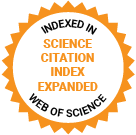Journal of Medical Internet Research
The leading peer-reviewed journal for digital medicine and health and health care in the internet age.
Editor-in-Chief:
Gunther Eysenbach, MD, MPH, FACMI, Founding Editor and Publisher; Adjunct Professor, School of Health Information Science, University of Victoria, Canada
Impact Factor 5.8 CiteScore 14.4
Recent Articles

Digital health interventions (DHIs) have rapidly evolved and significantly revolutionized the health care system. The quadruple aims of health care (improving population health, enhancing consumer experience, enhancing health care provider [HCP] experience, and decreasing health costs) serve as a strategic guiding framework for DHIs. It is unknown how DHIs can impact the burden of type 2 diabetes mellitus (T2DM), as measured by the quadruple aims.

Creating a sustainable, patient-centered health care system necessitates integrated supply chains supported by information technologies. However, achieving interoperability among various devices and systems remains a significant hurdle. Our research highlights the need for systematic reviews that address health care interoperability as a holistic knowledge domain. Notably, we observed a lack of studies that outline its structure or develop a comprehensive, high-order facet-based taxonomy from the perspective of supply or value chains. This study aims to address that gap.

Older adults with cognitive deficits face difficulties in recalling daily challenges and lack self-awareness, impeding home care clinicians from obtaining reliable information on functional decline and home care needs and possibly resulting in suboptimal service delivery. Activity of daily living (ADL) telemonitoring has emerged as a tool to optimize evaluation of ADL home care needs. Using ambient sensors, ADL telemonitoring gathers information about ADL behaviors such as preparing meals and sleeping. However, there is a significant gap in understanding on how ADL telemonitoring data can be integrated into clinical reasoning to better target home care services.

Among 5.4 million people receiving treatment for asthma in the United Kingdom, more than 2 million experience suboptimal control, leading to the use of health care services and resulting costs as well as poorer quality of life. Online health communities (OHCs) are increasingly used as a source of lay health advice, providing opportunities for learning and mutual support and complementing information from “official” health sources. While engagement with OHCs has the potential to improve self-management, concerns remain about the reliability and usefulness of the information posted. Professional moderation of such communities is essential for supporting sensitive patients, ensuring adherence to forum guidelines, and maintaining clinical safety.

Self-monitoring of dietary behaviors is typically a central component of behavioral weight loss programs, and it is widely recognized for its effectiveness in promoting healthy behavior changes and improving health outcomes. However, understanding the adherence dynamics of self-monitoring of dietary behaviors remains a challenge.


Motivational interviewing (MI) is frequently used to facilitate behavior change. The use of change talk during motivational interviews can predict subsequent behavior change. However, no studies have compared the information obtained from traditional face-to-face motivational interviews and computer-mediated motivational interviews or resulted in the same amount of behavior change.

Individuals with mental disorders frequently use YouTube to express themselves, reach an audience, or as a means of understanding their condition. Testimonies posted on YouTube provide longer and richer perspectives than the short posts found on other social media platforms. Research focusing on the depiction of mental disorders on YouTube is blossoming. Bipolar disorders (BDs) are disabling mood disorders. The diagnosis of any mental disorder, and more so BD, is often a life-changing event. However, no published study has investigated the portrayal of diagnoses of BD on YouTube.

Recent years have seen an immense surge in the creation and use of chatbots as social and mental health companions. Aiming to provide empathic responses in support of the delivery of personalized support, these tools are often presented as offering immense potential. However, it is also essential that we understand the risks of their deployment, including their potential adverse impacts on the mental health of users, including those most at risk.

Osteoarthritis (OA) is a chronic degenerative bone and joint disease that significantly impacts patients’ quality of life and mental health, while also imposing a substantial economic burden on society. However, access to rehabilitation for patients with OA is challenging upon hospital discharge. Digital exercise therapy represents a promising telemedicine strategy for enhancing the management of OA, but its effect on OA is not yet clear.

Discontinuation of buprenorphine as a medication for opioid use disorder (MOUD) necessitates careful tapering to reduce opioid withdrawal and relapse. With a half-life of 43-60 days, buprenorphine extended-release formulation (BUP-XR) may provide gradual taper, facilitating successful treatment discontinuation.
Preprints Open for Peer-Review
Open Peer Review Period:
-

















